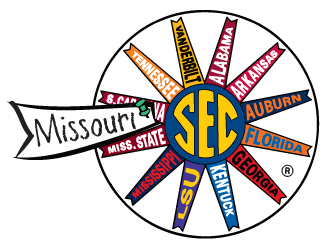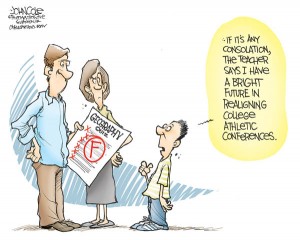Posted by rtmsf on September 22nd, 2011
Kenny Ocker (@kennyocker) is an RTC contributor.
With the flurry of conference expansion that has taken place since the conclusion of the NCAA Tournament, the biggest focus has been upon two subsets of teams: those that would be taken to new conferences, and those whose conferences would be dismantled around them. The former teams — a collection of powerful programs such as Syracuse and Pittsburgh, and basketball also-rans like TCU and Nebraska, and schools in between — have understandably been analyzed because they are the institutions affecting the change throughout the collegiate sports landscape. The latter programs — Big 12 litigious ursines Baylor chief among them — fear being left behind and have received plenty of attention about the prospect of falling out of the upper echelon of big-time, big-money college athletics. But there’s a third subset of programs affected by the changing composition of the conferences: the teams already within them. For the average team in an expanding major conference — teams like Oregon, Arkansas, or Georgia Tech — the impact of the expansion is one that hasn’t been looked at with the same level of scrutiny.

What Happens to Teams Like These in Conference Realignment? (AP/G. Broome)
So what is in store for these programs after this time of transition? The primary theme of uncertainty permeating the entire expansion process is just as applicable to these schools, and given the lack of coverage, it may actually be a more uncertain path. They possess similar conference structures, budgets and players, but they will face two fundamental problems exacerbated by the potential (or actual) growth of their conferences.
The first problem is likely to be the decreased amount of available challenging non-conference scheduling for teams. As their conferences grow, the pool of programs with similar statures that are available and willing to play them will diminish, both because teams will be able to play fewer teams as a result of the increased size of their conference and because of schools’ general unwillingness to play too many games against a single conference in one year.
Read the rest of this entry »
| rtc analysis
| Tagged: acc, arkansas, baylor, big 12, big east, conference realignment, connecticut, georgia tech, nebraska, pac-12, pittsburgh, syracuse, tcu
Share this story
















































